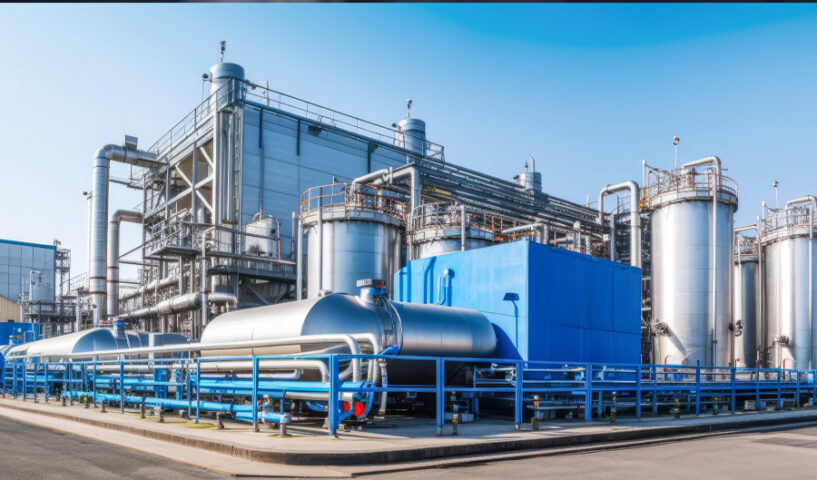
The economic impact of climate change
9th October 2023
Hitachi Energy: Advancing a sustainable energy future for all
9th October 2023Scaling up the green hydrogen sector

Samantha Phillips, Chief Commercial Officer, Dynelectro, discusses the challenges facing the green transition globally and the need for innovation in order to meet these demands.
Born in the United Kingdom and raised in Canada, Phillips now works in Denmark for Dynelectro, a Danish green energy innovation firm which aims to accelerate Power-to-X solutions. The organisation aims to enable Denmark to meet a 70 per cent reduction in CO2 emissions by 2030. “I started out in coal, transitioned into oil, then to light oil, then to natural gas, and now I get to work in green hydrogen,” Phillips says, adding: “The consumer base of green hydrogen has truly changed in a short period of time.
“We need all solutions simultaneously. We are entering a new era where we have to do everything in a condensed timeframe. That is the key point that needs to be made about scaling up green hydrogen. The timeline is unprecedented in what we are trying to achieve. We are talking huge numbers; an 80 per cent increase in projects each year, from one year to the next.”
Phillips believes that one of the main challenges of scaling up green hydrogen production is the high cost of the technology and infrastructure required to carry out conversions at a large scale.
Other challenges outlined by Phillips include the variability and intermittency of renewable energy sources, which she explains can make it “difficult to predict when and how much energy will be available for conversion”. “This variability also affects the efficiency of the conversion process, as the optimal conversion conditions may not always be present.”
In addition, the regulatory and policy environment can also pose challenges for scaling up within the Power-to-X industry. “For example, there may be limited incentives or support programmes for companies to invest in these technologies, or regulations may restrict the use or distribution of certain types of fuels,” Phillips says.
Explaining how there may also be challenges related to the supply chain and logistics of the Power-to-X industry, such as sourcing and transporting raw materials, managing waste products, and distributing finished products to end-users, Phillips states that these challenges can all “affect the scalability of the industry, and will need to be addressed in order to realise its full potential”.
Central to all of these challenges is strong policy co-ordination at both national and international levels, as Phillips explains that “policy is the key feature which will help drive long-term investment into the green hydrogen sector”.
Addressing key challenges to Power-to-X
Phillips outlines her belief that the current regulatory and policy environment is “arguably the most important challenge to address,” as favourable policies and regulations can create a more supportive environment for Power-to-X technologies, while unfavourable policies can create barriers to entry and hinder investment. “It is important to work with governments and regulatory bodies to develop policies and regulations that encourage the deployment of these technologies,” she says.
On the high cost of technology and infrastructure, Phillips states that while this is a significant challenge, it is “one that can be addressed through research and development efforts, as well as through partnerships and collaborations”. “By improving the efficiency and reducing the costs of conversion processes, companies can make these technologies more economically viable, which will help to drive adoption and investment.”
Another challenge is the variability and intermittency of renewable energy sources, which Phillips explains is “more difficult to address” as it is largely dependent on the natural variability of renewable energy sources. However, she says that there are “still steps that can be taken to improve predictability and stability, such as energy storage and hybrid energy systems”. “While this challenge may be difficult to fully address, progress in this area will help to make Power-to-X technologies more reliable and efficient.”
Although Phillips says that supply chain and logistics challenges are important to address, she nevertheless believes that they are “somewhat secondary to the other challenges I have spoken of”. “However, by streamlining supply chain processes and improving the environmental sustainability of these technologies, companies can reduce costs and improve the overall viability of Power-to-X solutions.”
The need for innovation
Phillips tells of the need to innovate on the financial side and on how projects are made, as “this is where we are actually problem solving”. “We have a way which addresses the variability of wind and the renegades. The solutions exist, it is just that the heavily subsided amount of funding going into fossil fuels is the biggest obstacle which has to shift.
“There is $320 billion being subsidised to the fossil fuel industry globally. As for renewable, it is only half that, $162 billion. The money is still being funnelled into our fossil fuel development,” she says.
She outlines five broad areas where there are innovative theories which can enable the narrowing of this financial gap. They are:
• breakthroughs in conversion technologies;
• advances in energy storage;
• integration with renewable energy systems;
• digitalisation and automation; and
• circular economy solutions.
Concluding, Phillips emphasises the importance of “sensible time scales” as “bringing new technologies and solutions to market takes time”.
“Experience shows that the innovation process usually takes 20 to 70 years from prototype to commercialisation, with large-scale process technologies taking typically longer than small modular technologies.”

